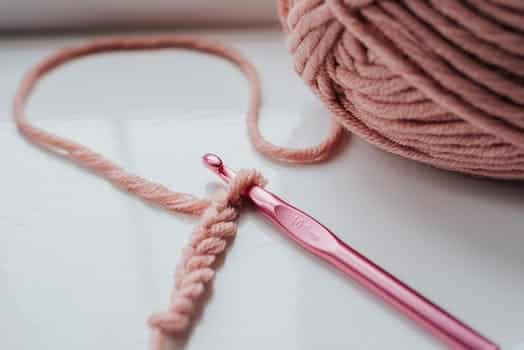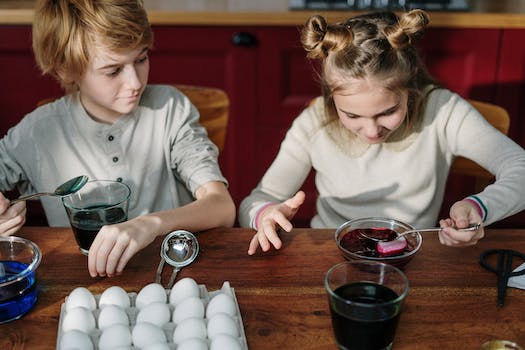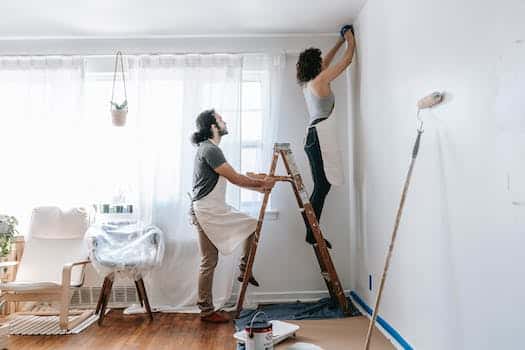Do you want to give your home a special, yet eco-friendly, touch? Stop right there! 10 innovative upcycling projects that you may do yourself will be discussed in this post. The term “upcycling” refers to the practice of transforming used or discarded objects into something of higher aesthetic value. Whether you’re a seasoned DIYer or just getting your feet wet, you’ll be inspired to let your creative juices flow and find new uses for commonplace items by working on these projects. Prepare to get your hands dirty and start implementing these creative upcycling ideas into your home.
- 1. Introduction
- 2. 1. Upcycled Furniture
- 2.1. Transforming old furniture into stylish pieces
- 2.2. Repurposing materials for unique designs
- 2.3. Adding personal touch through upcycling
- 2.4. Tips for choosing the right furniture to upcycle
- 2.5. Step-by-step guide for upcycling furniture
- 3. 2. Upcycled Home Decor
- 3.1. Creating decorative items from recycled materials
- 3.2. Using upcycled materials for eco-friendly decor
- 3.3. Upcycling ideas for walls, shelves, and tabletops
- 3.4. Incorporating upcycled decor into different themes
- 3.5. Inspiring examples of upcycled home decor
- 4. 3. Upcycled Fashion and Accessories
1. Introduction
Upcycling, also known as creative reuse, is the practice of making new, useful products from previously used, or “waste,” materials. It’s on the rise since it’s eco-friendly and fun to do, perfect if you want to express your individuality via your home’s design. Here, we’ll take a look at 10 eco-friendly and chic upcycling ideas that you can do yourself. These ideas, which range from reusing old furniture to making attractive items out of everyday objects, will get you thinking creatively about ways to reuse materials that might otherwise be thrown away. Roll up your sleeves and prepare to embark on an exciting and satisfying upcycling adventure!
1.1. What is upcycling?
Upcycling is the practice of making use of previously used materials to create something of greater worth. Finding a new use for something that would otherwise be discarded is what this term refers to. When compared to recycling, upcycling keeps things in their original form so that they can be used again. This environmentally friendly method not only saves trash, but also inspires ingenuity and resourcefulness. Upcycling is a great way to breathe new life into commonplace objects and create one-of-a-kind decor for your house.
1.2. Benefits of upcycling
Upcycling, often known as creative reuse, is the practice of making useful items out of otherwise unusable resources. It is a waste-reducing sustainable strategy with additional advantages. Repurposing obsolete materials has many benefits, including financial savings, increased resourcefulness, reduced waste, and environmental friendliness. In this post, we’ll look at ten eco-friendly and innovative upcycling projects that you can do yourself.
1.3. Why choose DIY upcycling projects
Upcycling ideas that you can do yourself are a great way to give your home a new look without spending a fortune. You can give your home a personal touch while giving previously used goods a new lease on life through the process of creative upcycling. Whether you’re a DIY master or just getting your feet wet, you’ll find something in these 10 upcycling projects to spark your imagination and help you create a space that’s uniquely yours.
2. 1. Upcycled Furniture
Furniture that has been upcycled from other materials, such as old wood or metal, is becoming increasingly popular as a way to personalize and upgrade one’s house. Giving old furniture a new life through creative reuse has environmental benefits. DIY upcycling projects are an excellent way to give your home a facelift without breaking the bank. The choices are practically limitless, ranging from repurposing an old dresser as a stylish storage unit to making a contemporary coffee table out of recycled wood pallets. As an added bonus, furnishing your home with upcycled items is a great way to show off your own sense of design and ingenuity. So, if you want to give your house a special touch, try your hand at upcycling with these ten exciting endeavors.
2.1. Transforming old furniture into stylish pieces
Repurposing antique furniture is a fantastic way to give your home a one-of-a-kind look and feel. Old furniture can be given a second chance with some ingenuity and do-it-yourself skills. Upcycling is a great way to breathe new life into old furniture, whether it’s an old chair, table, or dresser that’s seen better days. Upcycling is a great way to save money and resources while also letting your creativity shine through in one-of-a-kind creations. Here, we’ll take a look at 10 ingenious upcycling projects that you can do yourself to make your house more chic and eco-friendly.
2.2. Repurposing materials for unique designs
Parfaits made with Greek yogurt are a healthy and tasty way to start the day. Greek yogurt, which is rich in protein and probiotics, serves as the parfait’s basis and imparts both creaminess and tang. Beginning with your preferred fruit, such as berries, sliced bananas, or chopped mango, layer the bottom of a glass or jar with Greek yogurt. Greek yogurt should be piled high atop the fruit. For extra crunch, top with granola or chopped nuts. Keep piling things up until the container is full. If you want to add a little sweetness, try honey or maple syrup. Greek yogurt parfaits are convenient for rushed mornings since they can be made the night before and stored in the fridge. You may have a healthy and filling breakfast ready in little time at all if you just grab and go!
2.3. Adding personal touch through upcycling
By giving previously used goods a new purpose, people all around the world are able to express their unique styles in their homes. Upcycling is particularly effective when used to furniture. Many individuals today prefer to repurpose old furniture into new, one-of-a-kind pieces rather than invest in brand-new items. Not only does this help the environment, but it also allows one to express their unique style and originality. Repurposing old furniture and giving it a new lease of life is possible with just a little ingenuity and some fundamental do-it-yourself skills. Here are some inventive DIY upcycling projects that will help you revamp your home, whether you’re a seasoned pro or just getting started.
2.4. Tips for choosing the right furniture to upcycle
Picking the correct pieces of furniture to upcycle may make a world of difference. Whether you’re an experienced upcycler or just getting your feet wet, the following advice will help you pick the ideal furniture for your do-it-yourself transformations:
The first step in upcycling furniture is to assess its condition before deciding which piece to use. Keep an eye out for flimsy patches and major flaws like cracks and water stains. Picking a sturdy item can simplify the upcycling process and lengthen the life of the finished product.
Second, think about the piece of furniture’s style and design you wish to upcycle. First, you need to decide if it has the look you want for your house. Try to find pieces that have fascinating curves and strong wood frames or other high-quality construction.
Third, choose the proper size; think about how the furniture will fit into the room. Take accurate measurements of the space you intend to put the repurposed item in. It is important to keep in mind that furniture can be resized or altered as needed during the upcycling process.
Don’t be scared to think beyond the box and visualize a piece of furniture’s potential; this is step four in the process of looking for hidden potential. Imagine the potential when some TLC in the shape of paint, new furniture, or other embellishments have been made. With enough ingenuity and imagination, even the most ordinary objects may become eye-catching focal points.
Think about your experience and how much time and work you are willing to put into the project before you start. More complex upcycling methods may call for woodworking or upholstery expertise. Pick a furniture project that is within your ability so that you can take pleasure in the work without becoming frustrated.
If you follow these guidelines, you’ll have no trouble picking out the perfect pieces of furniture to upcycle into stunning, one-of-a-kind accents for your house.
2.5. Step-by-step guide for upcycling furniture
Repurposing antique furniture is a fantastic method to refresh your home with a one-of-a-kind look and feel. No of your level of DIY expertise, this detailed guide will walk you through every step of transforming your old furniture into something new and improved.
Step 1: Pick the Right Piece of Furniture. The first step in upcycling furniture is picking out the piece you wish to repurpose. Try to find items that are well-built and in good shape. Because of this, upcycling will be less of a hassle and yield better results.
Before you start upcycling, give the furniture a good cleaning to get rid of any filth, dust, or grime. Depending on the material, you should clean it with warm soapy water or a mild cleaner. After it has been cleaned, sand down the rough areas and fix any cracks or chips that you find.
Third, settle on a layout: think about the overall look and feel you want to achieve with your upcycled furnishings. Try looking for motivation in periodicals, online, or on social media. Make a rough sketch or mood board to help you picture the finished product. The upcycling process will go more smoothly if you do this.
To upcycle something, step four is to gather the necessary materials and tools. Things like paint, brushes, sandpaper, priming, glue, cloth, and hardware (knobs and handles) fall into this category. Make sure you have everything you need on hand before starting the project so you don’t have to put it on hold.
5. Prime the surface to produce a smooth base before painting or refinishing the furniture. Lightly sand the surface to remove flaws and improve paint or finish adhesion. Any previous upholstery should be removed or padded before fabric is applied.
Step six: paint or refinish; here’s where your imagination can run wild with color and treatment options. Evenly coat the surface with the chosen paint or finish using long, smooth strokes. It’s important to wait for each coat to dry before moving on to the next. Sanding after painting can give your project a weathered or antique appearance.
Once the paint or finish has set, you can add your own special touches to the repurposed furniture you’ve created. Stencilling, decoupage, ornamental molding, and handle swaps are all examples of this. Use your imagination and try new things to make your furniture one of a kind.
Put a protective sealer or finish on your repurposed furniture to make sure it lasts a long time. The finish will be preserved and the piece’s longevity increased thanks to this. When applying, wait the appropriate amount of time as specified by the manufacturer.
The final step is to arrange and style your recycled furniture in a way that best suits your space. Put it together so that it compliments the look of the room as a whole. To finish the appearance, you can incorporate accessories like pillows, rugs, and plants.
Don’t keep your upcycling triumphs to yourself; tell others about your achievements. Photograph the completed pieces of furniture and show them off to friends and family on social media. Show off your ingenuity and skill to encourage others to try their hand at upcycling.
3. 2. Upcycled Home Decor
Repurposed Furnishings:
Empty wine bottles can be transformed into beautiful vases by giving them a good scrub and then filling them with water and flowers. This easy DIY project can elevate any space to the next level.
Second, make elegant and one-of-a-kind shelves out of vintage luggage. You can use them to place your favorite books or wall art after a quick cleaning and the addition of some stylish brackets.
Mason jars may be repurposed into lovely lanterns with a little creativity. Create a warm and inviting ambiance in your outdoor space by placing candles or fairy lights within the jars.
Create a rustic coffee table out of an old wooden pallet and give it a second chance at life. Refurbish it by sanding it down, giving it new legs or wheels, and painting it to complement your interior design.
Use a vintage window with several panes to create a one-of-a-kind picture frame. You can take out the glass and replace it with something more personal.
Sixth, an upcycled tire ottoman might be a great way to repurpose old tires. Tires can be used as sitting if they are cleaned, wrapped in cloth or rope, and topped with a cushion.
Don’t toss out those old drawers before considering them as planters! Make use of your old tires by transforming them into chic planters for your yard or home. Drill few holes on the bottom for water to escape, then fill it with soil and your chosen plants.
Make use of your old books in a fresh way by making them into vintage book lamps. Create a charming reading nook with a literary twist by cutting out the middle of a book and inserting a light bulb within.
Save your wine corks and upcycle them into this creative and useful bulletin board. Create a custom bulletin board by gluing corks together in a form of your choosing and hanging it on the wall.
10: Repurposed CD Wall Art – Paint or cover used CDs with beautiful paper to make eye-catching wall art. Create a one-of-a-kind and contemporary display by hanging them in an inventive arrangement.
3.1. Creating decorative items from recycled materials
Making your own home decor using recycled materials is a terrific way to be creative and save the planet at the same time. Upcycling, the process of transforming unwanted objects into something useful or decorative, is currently all the rage. It’s beneficial on several fronts, including the environment and the wallet.
The options for creative upcycling of household items are limitless. Mason jars can be repurposed as attractive candle holders, while wine bottles can be repurposed as attractive vases. You may make truly unique items with only a little ingenuity and a few inexpensive DIY materials.
Put together a one-of-a-kind gallery using a variety of antique picture frames by painting them in bold colors and placing them on the wall. An alternate option is to construct a coffee table or bookcase out of recycled wooden pallets.
Thinking creatively and seeing the value in things that others might discard is essential for upcycled home décor. The act of giving previously used items a new use is both creative and environmentally responsible. So, round up your discards, exercise your ingenuity, and make over your house with these upcycling tasks you can do yourself.
3.2. Using upcycled materials for eco-friendly decor
Decorating your home using repurposed materials is a fantastic way to both help the environment and give your house a one-of-a-kind look. Upcycling is the practice of making new products from previously used ones. Reusing items is an excellent way to reduce waste and help promote a greener way of life.
Upcycled furnishings can take on an infinite variety of forms. Inspiration for everything from home furnishings to decorative accents can be found in items that would otherwise be discarded. You may use your imagination and some fundamental do-it-yourself skills to turn these ordinary objects into works of art that will enrich and enrich your home.
Making trendy use of vintage mason jars by transforming them into vases or candle holders is a common upcycling project. A simple coat of paint or the addition of some embellishments may transform an ordinary object into a showpiece for your coffee table or a one-of-a-kind shelf ornament. Wooden pallets can be repurposed into various pieces of furniture, including side tables and bookcases. These pallets may be given new life with some sandpaper and paint, saving you money that would otherwise be spent on new furniture.
You can improve the world while adding a unique touch to your home with upcycled furnishings. Finding new uses for old things forces you to be resourceful and imaginative. Supporting a circular economy, in which waste is avoided and resources are used more efficiently, is another benefit of upcycling.
Finally, repurposed house décor provides an original and eco-friendly option for interior design. You may use it to make unique, stylish items out of things that would otherwise be thrown away. Why not give it a shot and start upcycling some items around your house to make it more eco-friendly?
3.3. Upcycling ideas for walls, shelves, and tabletops
Wall, shelf, and tabletop upcycling projects may give a home a one-of-a-kind and eco-friendly look. Reusing unwanted materials can lead to amazing results that help the environment and save money. If you’re looking to make some changes to your house, consider these upcycling ideas:
Make a rustic piece of wall art by sanding down used wooden pallets and painting a design. You can use it as a showpiece in your living room or bedroom by hanging it on the wall.
Second, floatable shelves can be made from unconventional materials such as wooden crates or old bags. You can mount them on the wall and use them to show off your collection of books or other wall art.
Repurposed mason jars or tin cans make chic planters for your tabletop. Add some color and life to your room by painting them and filling them with succulents or other tiny plants.
Fourth, a vintage frame collage can be made by purchasing or collecting old picture frames from secondhand stores or flea markets. To use as picture frames, paint them in complementary colors and place them on a wall.
If you have some old vinyl records hanging around, you can make a cool clock out of them. You can attach a clock mechanism by cutting out the middle of the record. You can use it as a wall clock if you like the vintage look.
Make use of an old suitcase by turning it into a chic tabletop accessory. Mount it on some wooden legs and use it as a nightstand or as a conversation starter in the living room.
7. Ladder Bookcase. Transform a classic wooden ladder into a chic bookcase. Simply insert wooden boards in between the rungs of the ladder and paint it to blend in with the rest of your furniture.
Empty tin cans can be recycled into a beautiful and functional utensil caddy. Wrap them in bright cloth or paint them in eye-catching hues to liven up your cooking space.
9. Make a bulletin board out of wine corks by saving them for a special project. Put the corks in a frame made of wood and glue them together in a design. Put your notes and reminders on it.
Repurpose a mason jar into a sleek soap dispenser for the kitchen or bathroom. Put some of your preferred liquid soap into the jar, then screw on the pump top.
This is just the beginning of the creative upcycling possibilities for your walls, shelves, and tables. Put your mind to work and see what you can come up with to make your home more beautiful and functional.
3.4. Incorporating upcycled decor into different themes
Effective team communication requires a foundation of trust and cooperation. Team members are more likely to work together, exchange ideas freely, and listen attentively when they trust and collaborate with one another. Trust fosters an encouraging and constructive setting in which team members feel safe to share their thoughts and opinions without worrying about reprisal. Conversely, working together stimulates creativity, new ideas, and problem-solving. Team members can benefit from one other’s skills and knowledge by working together. Strong team chemistry and improved communication are the results of a concentrated effort to create trust and collaborate.
3.5. Inspiring examples of upcycled home decor
Tacos made with ground turkey or black beans are a hearty and nutritious dinner choice. These tacos are great for people who are always on the go and need simple recipes for meal prepping because they can be made ahead of time. Black beans are a vegetarian alternative that is strong in fiber and protein while still being a healthy source of iron and folate. The ground turkey or black beans for these tacos can be cooked with any flavors and spices you like. Tacos can be made using either corn or flour tortillas, and the cooked meat or beans can be topped with lettuce, tomatoes, cheese, and salsa. You may eat these tacos on their own, or round out your dinner with some rice and a salad. These tacos are a crowd-pleaser whether you fill them with ground turkey or the vegetarian option of black beans.
4. 3. Upcycled Fashion and Accessories
A great and simple meal option is spaghetti cooked all at once with tomato sauce. This dish is ideal for folks who are short on time but still want to eat well. You can make a pasta dish the whole family will enjoy with just a few basic ingredients.
Start by preheating a large pot over medium heat for the pasta. Cook some minced garlic in some olive oil until it releases its aroma. Finally, season with salt, pepper, and dried herbs like basil and oregano and add canned tomatoes and tomato paste. Combine everything and bring it to a simmer, stirring occasionally.
Then, dump in some uncooked pasta and cover it with tomato sauce. Pastas like penne, spaghetti, and rotini are all fine options. Pasta should be cooked for 10-12 minutes with the lid on, or until it reaches the required tenderness.
Add some freshly chopped basil and grated Parmesan cheese to the cooked spaghetti. The Parmesan cheese is salty and creamy, while the basil gives it a fresh, herbal flavor. Mix well so that the cheese melts and coats the pasta.
Garnish the hot one-pot pasta with tomato sauce with extra Parmesan cheese if you like. This dish is simple to prepare and clean up after because it only uses one pot. It’s a smart choice for those nights when you don’t have much energy left to devote to the kitchen and the dishwasher. Enjoy!
4.1. Revamping old clothing into trendy outfits
You can save money, show off your personal style, and help promote sustainable fashion by giving your old clothes a new lease of life. More and more people in recent years have come to appreciate the value of upcycling their unwanted clothing. Using basic do-it-yourself methods, you may make once-loved garments look fresh and modern again. You can put your own spin on your ensemble by upcycling bags, jewelry, and shoes. Why not give your old garments a second shot and make something new and trendy instead of throwing them away?
4.2. Upcycling accessories for a unique style
Accessories that you may upcycle to make your own
Upcycling accessories is a great way to make a statement with your particular style. The term “upcycling” is used to describe the practice of repurposing unwanted materials. Upcycling not only aids in waste reduction and sustainability but also provides an outlet for personal expression through clothing and accessories.
Reusing jewelry is a simple technique to upcycle items. Adding charms, beads, or even just a fresh coat of paint may breathe new life into old or broken objects. This not only helps you save money, but it also guarantees that your accessories are completely unique.
Making accessories out of previously loved garments is another prominent form of upcycling in the fashion industry. Scarves can be fashioned into headbands, belts into chic bracelets, and buttons into one-of-a-kind pins or brooches. The options are practically limitless, and what’s even better is that you can tailor these items to your specific taste.
Upcycling materials like leather or denim to make eye-catching accessories is another option for the daring. Denim remnants can be repurposed into chic clutches or wallets, and an old leather belt can become a chic choker or cuff. These upcycled accessories not only give you a one-of-a-kind look, but they also give you something to talk about when others ask where you got them.
In conclusion, upcycling accessories is an original and eco-friendly approach to improving one’s individual sense of style. Accessories can be made that are both one-of-a-kind and good for the planet if outdated materials are given a new lease on life. If you’re looking to inject some personality into your closet, why not try upcycling? Both fashion and the world will appreciate your efforts.
4.3. Using fabric scraps for creative fashion projects
Repurposing old clothing and other textiles into new items may be a rewarding and eco-friendly hobby. Instead of tossing out scraps of fabric, consider using them to create one-of-a-kind additions to your wardrobe. For your next upcycled clothing endeavor, consider these suggestions:
Bags, caps, and shoes can all benefit from having colorful patches sewn onto them using fabric remnants for a patchwork effect. You may add a special flair to your accessories by doing this.
Make fashionable accessories like earrings, necklaces, and bracelets out of leftover fabric scraps. You can make one-of-a-kind designs by playing around with various forms and layouts.
Make fashionable headbands or hair clips out of leftover fabric scraps. To give anything that little bit more, use beads or buttons.
Fabric remnants may be turned into lovely flower brooches that can be attached on coats, scarves, and caps. Create a rainbow of flowers by piecing together different patterns and colors of cloth.
5. Shoe Makeover with Leftover Fabric You can update a pair of boring shoes by covering them with fabric remnants. This is a fun way to spice up your shoe game with some color and pattern.
Fabric appliqué involves affixing shapes cut from leftover fabric to other garments by means of sewing or gluing. Using this method, even the most basic of outfits may become instant conversation starters.
To make one-of-a-kind tote bags, use larger fabric remnants. Make them more practical and fashionable by adding pockets, zippers, or embellishments.
8. Fashionable head wraps can be made from leftover fabric to serve as a statement piece or as a practical hair accessory.
Belts, sunglasses, and phone covers may all be given a new look by being covered in bits of fabric. This will make them feel special and one-of-a-kind.
Make fabric wall art using leftover fabric to add color and texture to your walls. Make your walls more interesting by cutting out various shapes and arranging them in a collage.
These are just a few examples of what you can do with leftover fabric pieces to get your creative juices flowing. The nicest aspect is that you’re giving previously discarded materials a second chance at usefulness.
4.4. DIY upcycled jewelry and handbags
An integral part of any successful communication strategy is the use of nonverbal cues. Words are used in verbal communication, but nonverbal cues like facial expressions, body language, and tone of voice are just as important. Important information and emotions can be conveyed through these nonverbal clues that words alone could miss. Indeed, research has shown that nonverbal communication can make up a sizeable amount of total communication. Therefore, team communication can benefit immensely from an awareness and use of nonverbal cues.
4.5. Tips for maintaining and caring for upcycled fashion
To ensure the longevity and beauty of your upcycled fashion pieces, it is important to follow some tips for maintenance and care. Here are a few suggestions:
1. Read and Follow Care Instructions: Each upcycled fashion item may have specific care instructions depending on the materials used. It is essential to read and follow these instructions to avoid any damage or premature wear.
2. Hand Wash or Use Gentle Cycle: When it comes to cleaning upcycled fashion, it is best to hand wash the items or use a gentle cycle in the washing machine. This will help preserve the delicate nature of the materials and prevent any unnecessary damage.
3. Use Mild Detergent: Opt for mild detergents or eco-friendly options when washing your upcycled fashion pieces. Harsh chemicals can not only harm the environment but also cause damage to the fabric or embellishments.
4. Air Dry: Instead of using a dryer, it is recommended to air dry your upcycled fashion items. High heat can shrink or distort the fabric, and the tumbling action can cause stress on delicate seams or embellishments.
5. Store Properly: When not in use, store your upcycled fashion pieces in a cool, dry place away from direct sunlight. This will prevent any fading or discoloration and help maintain the integrity of the materials.
By following these simple tips, you can ensure that your upcycled fashion stays in great condition and continues to make a positive impact on the environment.
Conclusion
In conclusion, these 10 creative DIY upcycling projects offer a fantastic opportunity to transform your home in unique and sustainable ways. With a little creativity and some basic materials, you can give new life to old items and create stunning pieces that not only enhance your living space but also contribute to a greener environment. So roll up your sleeves and get ready to embark on a rewarding upcycling journey!






These 10 innovative and imaginative DIY home decor ideas from [object Object] provide a refreshing approach to enhancing ones living…